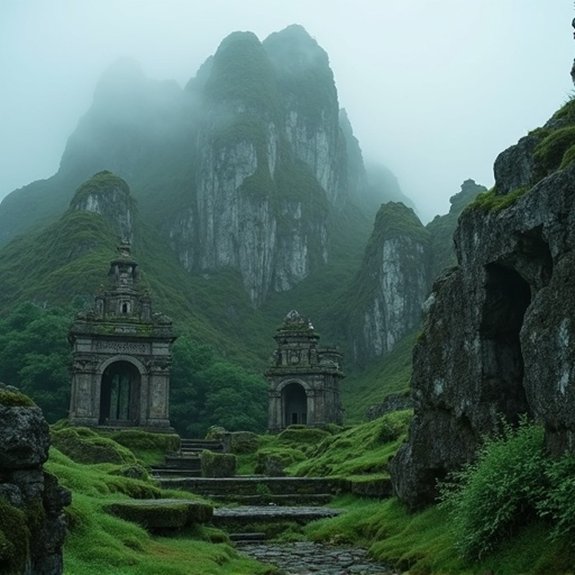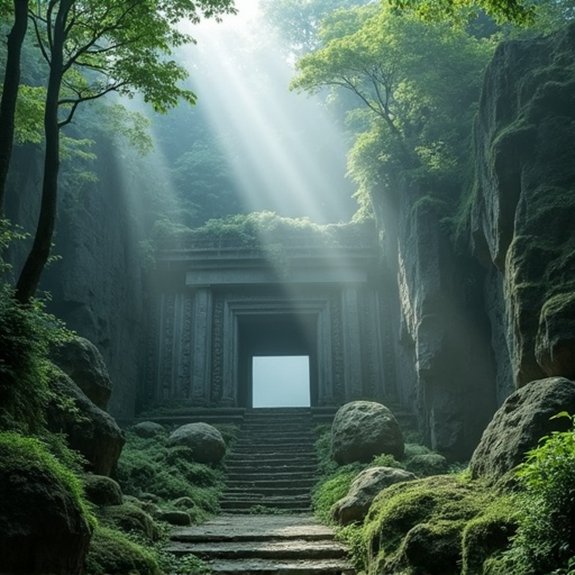The Riddle of the Senkaku Ruins
Beneath the waters off Yonaguni Island, stone formations defy simple explanation. They’ve sparked fierce scientific debate since their 1987 discovery—perfect right angles and geometric patterns that shouldn’t exist naturally. Some researchers insist they’re geological anomalies, while others see evidence of ancient human hands. The structures’ true origins remain locked in controversy, challenging everything scientists thought they knew about prehistoric civilizations in the Pacific.
Introduction

What lies beneath the crystal-clear waters surrounding the Senkaku Islands has captivated marine archaeologists and historians for decades. In 1987, local divers discovered massive stone formations off Yonaguni Island’s southern coast. These underwater structures feature precise angles, flat terraces, and what appear to be carved steps ascending from the seafloor.
Scientists can’t agree on their origin. Some researchers believe they’re examining ancient ruins from a civilization that existed when sea levels were lower during the last ice age. Others insist natural geological processes created these formations through tectonic activity and erosion.
The site’s geometric patterns defy simple explanation. Rectangular pools, triangular depressions, and parallel grooves suggest deliberate construction. Yet skeptics point out that sandstone naturally fractures along predictable lines. The debate continues as new expeditions reveal additional complexities.
Ancient Chinese Maritime Records
Maritime chronicles from the Ming Dynasty describe mysterious stone structures in waters east of the mainland, though scholars debate whether these accounts reference the Senkaku formations. The 1403 naval logs of Admiral Zheng He’s fleet mention “towers beneath the waves” near fishing grounds that match the islands’ coordinates. These records don’t provide architectural details but note the structures appeared man-made.
Later Qing Dynasty maps mark the area with symbols typically reserved for ruins or abandoned settlements. Chinese fishermen’s oral histories, transcribed in the 1800s, tell of underwater walls they’d glimpse during exceptionally clear conditions. They called them “dragon palaces” and avoided anchoring nearby. Modern researchers can’t verify if these accounts describe natural rock formations or actual ruins, as the original documents contain inconsistent geographical markers.
Notable Cases or Sightings

The most compelling evidence came in 1987 when Dr. Masaaki Kimura’s team mapped extensive underwater features, including what they’ve identified as pyramidal structures, drainage channels, and tool marks. Chinese divers in 1996 recorded additional anomalies—perfectly angled corners and what resembles an ancient road system. These discoveries haven’t definitively proven human origin, but they’ve intensified archaeological interest in the disputed waters.
Common Theories or Explanations
While geologists largely attribute the formations to natural tectonic processes and erosion patterns common in the region’s sandstone and mudstone layers, archaeologists haven’t reached consensus about the structures’ origins. Some researchers propose they’re remnants of ancient Ryukyuan settlements that subsided during seismic events. Others suggest they’re modified natural formations used as navigational markers by early maritime traders.
Marine biologist Dr. Kenji Tanaka’s team argues the geometric patterns result from columnar jointing, similar to Ireland’s Giant’s Causeway. However, his critics point to tool marks and precisely angled cuts that don’t match natural fracturing. Alternative theories include everything from Chinese naval outposts to Japanese fishing platforms. The most controversial hypothesis comes from independent researcher Marie Chen, who’s documented similarities between these structures and submerged monuments near Yonaguni Island.
Frequently Asked Questions
Are the Senkaku Ruins Accessible to Tourists or Researchers Today?
The Senkaku ruins aren’t accessible to tourists or researchers today due to the islands’ disputed territorial status between Japan, China, and Taiwan. Japan currently controls them, but political tensions and military patrols prevent civilian visits.
What Permits or Permissions Are Required to Explore the Site?
Explorers can’t obtain permits for the Senkaku ruins since Japan doesn’t issue civilian access permissions to these disputed islands. The Japanese Coast Guard strictly enforces restrictions, and China’s competing sovereignty claims further complicate any authorization attempts.
Have Any Artifacts Been Recovered From the Underwater Structures?
No artifacts have been recovered from the underwater structures. Researchers haven’t found pottery, tools, or other cultural objects that would definitively prove human construction. The site’s yielded only natural rock formations without archaeological materials.
What Is the Estimated Age of the Ruins Based on Dating Methods?
Scientists haven’t definitively dated the structures since they’re likely natural formations. If they were man-made, geological estimates suggest they’d have been above water around 12,000 years ago when sea levels were lower during the last ice age.
Are There Similar Underwater Formations Found Elsewhere in the Pacific Region?
Yes, researchers’ve identified comparable underwater formations throughout the Pacific. Taiwan’s Tiger Well structure, Okinawa’s Yonaguni Monument, and various sites near Polynesian islands display similar geometric patterns and terraced configurations that spark ongoing archaeological debates.


